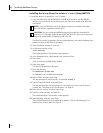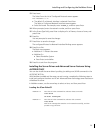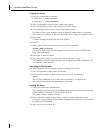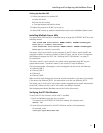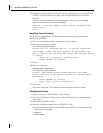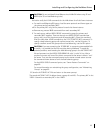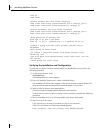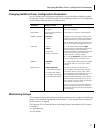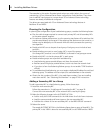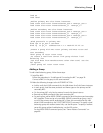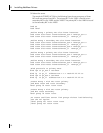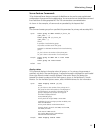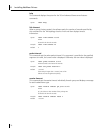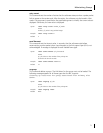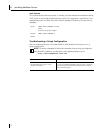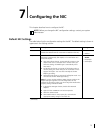
6 Installing NetWare Drivers
66
The examples in this section illustrate typical actions you might take in the course of
maintaining a 3Com Advanced Server server configuration under NetWare. They show
how to add NICs and groups to a server where 3Com Advanced Server technology
features are already installed and configured.
Two drivers are associated with 3Com Advanced Server technology features in
NetWare: SE and LBRSL.
Planning the Configuration
In planning the configuration of your load balancing groups, consider the following factors:
■ Plan the cable changes required to connect each primary NIC and all secondary NICs
to the same network segment.
■ For optimum failover performance, turn the spanning tree feature off at switches that
are connected directly to the server. If the spanning tree feature must be turned on, a
failover may be delayed up to 30 seconds while the switch processes the spanning
tree algorithm.
■ Decide which NICs are to be part of each group. Each group must include at least
two NICs.
■ Decide whether you want to use a foreign NIC in one of the groups.
One foreign NIC (one that is not a 3C990B NIC) is allowed in one group per server.
■ Decide which NIC is to be the primary NIC in each group.
■ Decide whether groups are to perform load balancing:
■ Load balancing groups provide failover and share the network load.
■ Resilient server link groups provide failover, but do not share the network load.
■ If you plan to form load balancing/failover groups, do not enable TCP/IP checksum
offload.
■ To use bidirectional load balancing, you must assign a dedicated IP address for each load
balancing group. This address must be unique (not used elsewhere on the network).
■ Obtain the slot numbers of the NICs. You need these numbers if you are installing
more than one NIC. See “Obtaining Slot Numbers” on page 57 for instructions.
Adding a Secondary NIC to a Group
To add a secondary NIC to a load balancing group, follow these steps:
1 Install the new secondary NIC.
Follow the procedures in “Installing and Connecting the NIC” on page 18.
Connect the new secondary NIC to the network that is used by the group.
2 Make the following changes to the AUTOEXEC.NCF file:
■ Add or verify the LOAD commands for the LAN drivers for all slot-frame instances.
■ Load the same protocols and frame types on the new secondary NIC.
■ Add the slot number of the new secondary NIC to the LBRSL GROUP command.
3 Reboot the server.
The sample AUTOEXEC.NCF file in the following figure shows a group of three NICs. The
primary NIC in slot 10001 is bound to two secondary NICs in slot 10002 and slot 10003.



